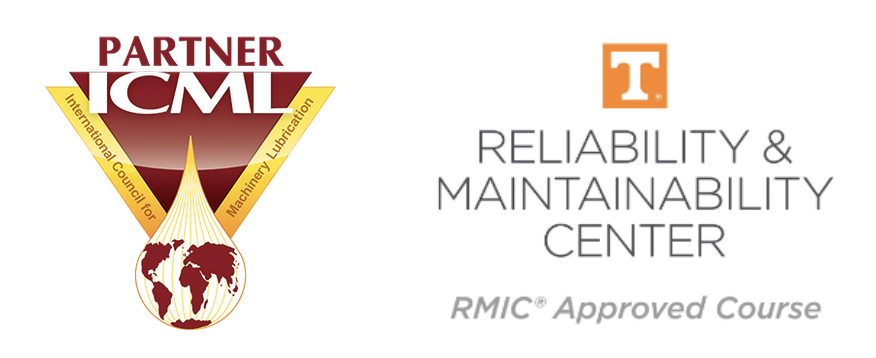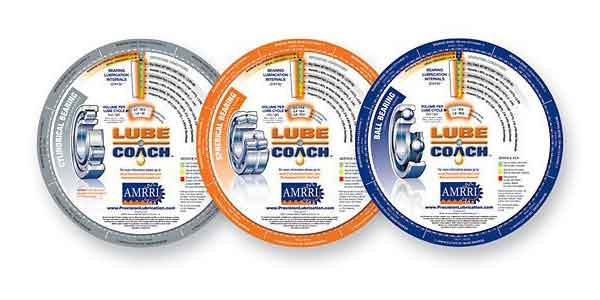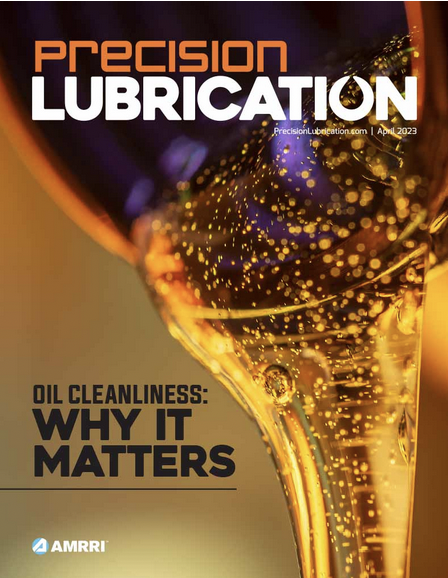Machinery Lubrication Level II Training
MLT Level II Certification Prep Class
MLT II Training Course
$1695
Per Student
Why AMRRI Training?
More training (32 hours over 4 days)
Comprehensive course manual
Breakfast, lunch, and snacks provided

4-Day Training Course
About the Course
This comprehensive course was designed to enhance the abilities of program managers, lubrication engineers, and frontline technicians in expressing machine specifications and precise lubrication practices. This course includes practical case studies and problem-solving activities to help students retain and recall methods that tackle real-world challenges.
MLT Level II Training Dates
MLT Level II Training
Course Agenda
Program hours: 8:00 AM – 4:30 PM
Maintenance Strategy
- The impact of lubrication on machine reliability
- Lubrication, lubricant life, and consumption
- Strategies for achieving lubrication excellence
Lubrication Theory
- Friction and tribology
- Types of friction and wear
- Mechanisms of lubrication regimes
- Lubricant categories – gas, liquid, solid, cohesive
Lubricant Formulation
- Base-oil refining methods and API categories
- Solvent-refined
- Hydro-treated
- Severely hydro-treated
- Hydrocracked
- Mineral base oils
- Naphthenic
- Paraffinic
- Aromatic
- Vegetable base oils and biolubes
- Synthetic lubricant characteristics/applications/compatibility
- Synthesized hydrocarbons (e.g., Polyalphaolefins)
- Dibasic acid esters
- Polyol esters
- Phosphate esters
- Polyalkylene glycol
- Silicones
- Fluorocarbons
- Polyphenol esters
- Food Grade lubricant classification
- Types and functions of additives
- Types and functions of solid additives
- Modes of additive depletion
Grease Application and Performance
- Grease applications requiring high consistency
- Grease applications requiring low consistency
- Causes of grease separation
- Multipurpose greases
- Performance and application of specific grease thickeners
- High-temperature greases
- Coupling greases
Lubricant Selection
- Viscosity selection by machinery and environmental conditions
- When to use synthetic lubricants
- When to use biodegradable lubricants
- Lubricant consolidation
- Select lubricating oils for:
- Fire-resistant applications
- Hydraulics – mobile and industrial
- Turbines
- Compressors
- Bearings
- Chains and conveyors
- Mist applications
- Gears – automotive and industrial
- Engines – diesel, gas, gasoline
- Pneumatic tools
- Spindles
- Ways and slides
- Selecting greases for:
- Chassis
- Couplings
- Antifriction bearings
- Journal bearings
- Automotive bearings
- Automatic lubrication systems
- Lubricant selection standards development
- Procedures for testing and quality assurance of incoming lubricants
- Procedures for approval of candidate lubricants
Lubricant Testing and Performance Analysis
- Viscosity
- Flashpoint and fire point
- Pour point ASTM D97 and cloud point ASTM D2500
- Foam ASTM D892
- Air release properties ASTM D3247-99
- Neutralization number
- Acid Number ASTM D 664/D974
- Base Number ASTM D 974/D2896
- Filterability ISO 13357
- Oxidation stability
- Turbine Oil Oxidation Test ASTM D943
- Rotary Pressure Vessel Oxidation Test ASTM D2272
- Rust and corrosion tests
- Turbine Oil Rust Test ASTM D665
- Copper strip corrosion ASTM D130
- Anti-wear tests
- Four ball wear test ASTM D2266
- Vickers wear pump test ASTM D2882
- SRV Test
- Extreme Pressure
- Four ball EP test ASTM D2596
- Timken Extreme Pressure Test ASTM D2509
- Falex EP/Wear Test ASTM D2670
- FZG Four Square Gear Test Rig ASTM D5182.97
- Demulsibility ASTM D 1401
- Grease consistency ASTM D217
- Dropping point of grease ASTM D2265
- Mechanical stability of greases ASTM D217A
- Rolling stability of greases ASTM D1831
- Water washout test for greases ASTM D1264
- Water spray test for greases ASTM D4049
- Rolling bearing rust test ASTM D1743
- Koppers Centrifugal Stability Test
- Oil separation in grease storage ASTM D1742
- Oxidation stability – Greases ASTM D942
Lubricant Application
- Procedures for:
- Oil drain
- Reservoir and system flushing
- Disassembling and cleaning reservoirs and sumps
- Filling
- Top-up
- Grease packing
- Re-greasing
- Grease changeout
- Determine and calculate the correct amount for re-greasing
- Determine and calculate the correct frequency interval for re-greasing
- Manage optimum equipment/systems for lubricant application according to machinery requirements
- Safety/health requirements for lubricant application
- Manage proper maintenance of lubrication equipment
- Manage proper maintenance of automatic lubrication systems
- Create and update lubrication surveys
- Recording execution of the lubrication program
- Proactive management and detection of leaks
- Waste oil and filter management and disposal
- Writing a lubrication PM
Preventive and Predictive Maintenance
- Creating and managing lube PMs and routes
- Creating and managing lubrication inspection checklists
- Used oil analysis to determine optimum condition-based oil changes
- Used oil analysis to troubleshoot abnormal lubricant degradation conditions
- Used oil analysis to troubleshoot abnormal wear related to lubricant degradation and contamination
- Procedures and methods for identifying the root cause of lubricant failure
- Technologies to optimize re-grease frequency and quantity (ultrasonic, temperature, shock pulse, etc.)
Lubricant Condition Control
- Proper sampling procedures
- Proper sampling locations
- Proper selection of breathers and vents
- Proper selection of filters according to cleanliness objectives
- Filter rating – Beta Ratio
- Sump and tank management to reduce:
- Air entrainment/foam
- Particles
- Water
- Sediments
- Heat
- Silt and sediment
- Unnecessary lubricant volume
- Proper selection of reconditioning systems for:
- Water
- Air and gas
- Particles
- Oxidation products
- Additive depletion
- Lube reclamation
- Requirements
- Feasibility
- Procedures for reclaiming and reconditioning
- Use of oil analysis to approve reclaimed or reconditioned lubricants
Lube Storage and Management
- Designing optimum storage rooms
- Defining maximum storage time according to environmental conditions and lubricant type
- Safety and health requirements
- Proper sampling procedures and locations for sampling stored lubricants
- Procedures for reconditioning and filtering stored lubricants
-
Course Formats
Public Training
Attend an In-person Event
Private On-site Courses
Bring Us to Your Facility or Other Venue
Recorded Online Courses
Learn at Your Own Pace
Preparation for MLT II Certification
Participating in this training can significantly enhance your preparations for the MLT II certification test. It’s essential for all prospective certification candidates to register ahead of time with the International Council for Machinery Lubrication (ICML) to sit the examination. The ICML conducts certification tests online and after all public AMRRI training courses.
If you would like to take the certification exam, please schedule with ICML here: Register for your ICML exam, or you can call the ICML at 918-259-2950. The price for certification is $275 and is paid directly to the ICML.




